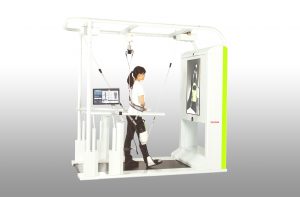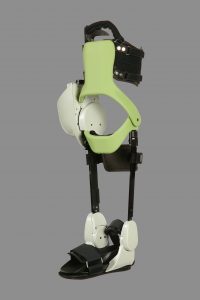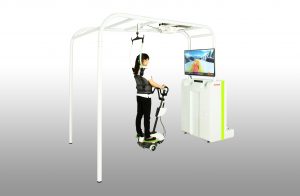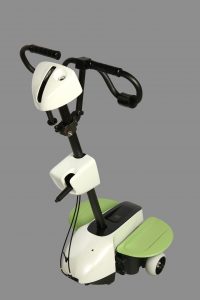Toyota Modifies Partner Robots To Help In Patient Rehabilitation
Clinical research models to be introduced in hospitals this autumn
Toyota has modified two of its Partner Robots to create new models for a clinical research study into how they can be used in the rehabilitation of sick and injured people, helping them walk and keep their balance.
The Walk Training Assist and Balance Training Assist robots are part of the Toyota Partner Robot Series. First announced in 2011, they have been developed in collaboration with the Fujita Health University Hospital in Toyoake, Japan.
The modification process has used verification tests in co-operation with medical facilities, to streamline the robots’ functions, focusing on motor learning theory and easier attachment to the user.
The Walk Training Assist Robot can be attached to a paralysed leg to help the user walk and stand. The Balance Training Assist robot helps patients regain control of their balance, linking their body movements to a video game display.
Toyota wants to make its robots commercially available in the near future, and will be supplying its clinical research models, for a fee, to 20 medical facilities from this autumn. It will also be presenting its modified robots at the annual meeting of the Japanese Association of Rehabilitation Medicine in Nagoya from 5 to 7 June.
Walk Training Assist Robot
Features: –
- Provides support from the early stages of rehabilitation so that people suffering lower limb paralysis can train to walk normally.
- Attached to a paralysed leg, this robot helps the user swing the leg forwards, while helping straighten the knee and supporting the user’s weight.
- The leg mount has a lifting mechanism which reduces the weight burden of the robot on the user.
- The level of robot assistance can be varied, according the degree of rehabilitation required.
Main modifications: –
- The joint angle and other walking data are monitored to provide real-time feedback on performance to the user, via audio and video.
- A new mechanism allows for faster attachment.
Dimensions: width 1,155mm, length 2,560mm; height 2,345mm.
Balance Training Assist Robot
Features: –
- Supports people unable to maintain balance in an enjoyable rehabilitation process that used a video game-style presentation.
- Uses the same inverted two-wheel technology that is also featured on Toyota’s Winglet personal transport assistance robot. The user’s forward/back and left/right body movements are linked to a character in the video game.
- Tennis, skiing and rodeo game modes are available, helping train the user in shifting their centre of gravity in different directions while keeping their balance.
- The level of game difficulty is automatically set in line with the degree of rehabilitation required.
Dimensions: width 1,935mm; length 1,860mm; height 2,350mm.





